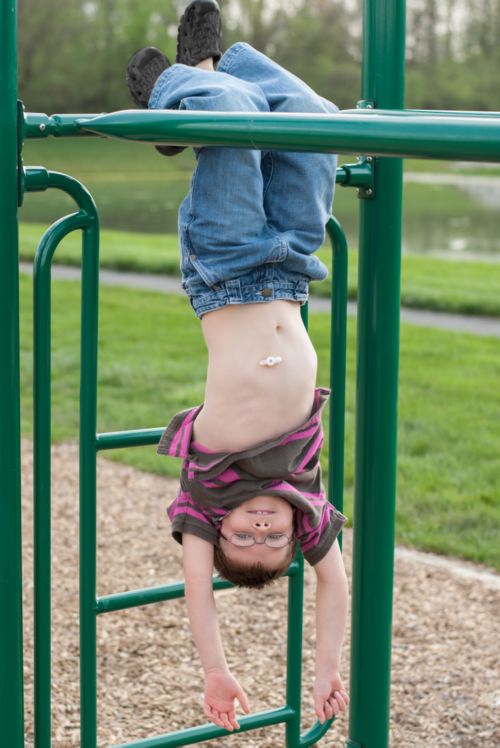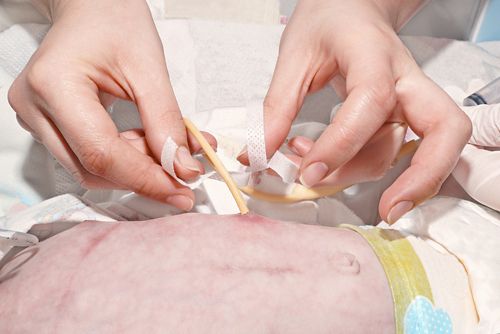Menu
Close
Back
Welcome to
Together is a new resource for anyone affected by pediatric cancer - patients and their parents, family members, and friends.
Learn More
If your child needs a feeding tube for enteral nutrition, it is important to take care of the skin around the tube. This will reduce discomfort and lower the risk of infection and other problems. It is important to know what skin problems can occur, why they happen, and how to address them if they develop.
Tubes placed through the nose (NG, ND, or NJ tubes) can irritate the inside of the nose and the skin where the tube is taped. Proper care can help prevent discomfort and skin problems.
Gastrostomy (G) tubes, gastro-jejunostomy (GJ) tubes, and jejunostomy (J) tubes are feeding tubes placed through a small opening (stoma) made in the wall of the abdomen. They may be long tubes or low-profile tubes. Once healed, the skin around the tube should be painless. The size and shape of the opening should just fit the size of the feeding tube.
Healthy G-tube sites don’t need a lot of extra care. Daily baths with soap and water are usually all that is needed to keep the area clean. General care tips for feeding tube stoma sites include:

A gauze dressing may cover the site for the first few days after a G-tube is placed.
Leaking can occur around the tube. If leaks occur from the tube, it can be due to a problem with the balloon fill. Leaks can also be related to neutropenia.
Moisture and acidic stomach fluids can cause the skin to be red and irritated. If this occurs, clean the skin with water several times each day. The area will have to be cleaned more often if drainage increases. Gently dry the skin after cleaning. A barrier powder or ointment may be needed. If the skin does not improve or leaking continues or occurs in large amounts, talk to your care team.
Reasons for leaking around the feeding tube site include:
Medicines that control stomach acid or increase stomach emptying may help reduce damage caused by leaks. Discuss these options with the child’s care team.
Granulation tissue is extra skin tissue that can grow at the site of the stoma. Granulation tissue is common. It usually appears red and moist, similar to the skin inside the mouth. This tissue is delicate, and there may be some bleeding or discharge. Granulation tissue may be caused by friction as the tube rubs against the skin.
Ways to help prevent granulation tissue include keeping the site dry, limiting movement of the tube, and making sure the tube fits properly. Granulation tissue may be treated by applying foam dressings or silver nitrate. In some cases, it may be removed with surgery.
In a healthy child, infection is rare at the stoma or the skin around it. However, children with weak immune systems are at higher risk for infection of the tube site. Signs of infection include:
Although redness and discharge can be signs of infection, they can have other causes. Sometimes stomach contents will mix with bacteria on the skin and cause a bad smelling discharge. Redness caused by leaks can usually be treated by cleaning the skin more often.
Contact the care team if symptoms do not improve or there are signs of infection.
Bleeding around the stoma can have several causes. The site may bleed after a tube change. Bleeding may also occur due to granulation tissue where the skin is more fragile. A small amount of bleeding is not serious.
If bleeding does not stop after a few minutes or gets worse, apply pressure to the area, and call the care team right away.
Neutropenia occurs when the absolute neutrophil count (ANC) is less than 500. Neutropenia can cause the stoma to get bigger. Because the immune system is weak, the body stops trying to close the hole and can’t fight off infection. This can cause the site to stay wet, leak, and be painful. Bacteria can form, and an infection can develop. The stoma site will not improve until white cell counts rise again. Sometimes the site will look worse before it begins to look better. If this occurs, treat the site as recommended by the care team.
—
Reviewed: September 2022